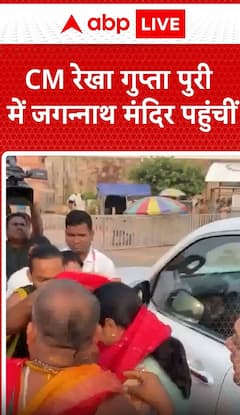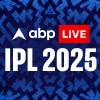Why February 21 Is International Mother Language Day — All About 'Ekushe', Bangladesh Bhasha Andolan History
International Mother Language Day 2022: In 2000, UN declared February 21 as the International Mother Language Day, recognising Bangladesh’s battle and sacrifices made for the mother tongue, Bangla.

Amar bhaiyer rokte rangano Ekushe February, Ami ki bhulte pari…
(Can I ever forget February 21, the day stained by the bloodshed by my brothers?)
For any Bengali in the world, whether from Bengal, Bangladesh, or any other part of the world, February 21, or Ekushe February, is not just any other date.
The 21st of February is a day that defines their identity, a day steeped in history and the bloodshed by the people of East Pakistan (now Bangladesh) to save their mother tongue, Bangla, from the imposition of Urdu by West Pakistan.
Bhasha Andolan, as it was widely known, was a one-of-its-kind movement, and February 21, 1952, is a date that heralded the beginning of a long battle that ended with the creation of Bangladesh after the Liberation War of 1971.
‘Ekushe (twenty-first)’, as the day is known in Bangla, gives the Bengalis a sense of pride for their language that they get from nothing else.
In 2000, on an initiative by Bangladesh, the United Nations declared February 21 as the International Mother Language Day, recognising the country’s battle and the sacrifices made for the mother tongue.
Bangla is the 6th most spoken language in the world today.
ALSO READ | Did You Know India Has Over 19,500 Mother Tongues? Know 15 Interesting Facts On Mother Language Day 2022
International Mother Language Day History
The struggle for Bangla began soon after 1947 as India attained Independence after 200 years of British rule but was left with the scar of Partition. While Pakistan came into existence, it was faced with a big task of integrating the East and West that were different in all aspects — social, cultural and linguistical.
They also had to decide on an official state language.
The Muslim League that ruled the country wanted to make Urdu the language of East Pakistan too. And in November 1947, during the Pakistan Educational Conference, it was decided by non-Bengali leaders of West Pakistan that Bangla would be dropped from the list of approved subjects.
“This decision was opposed by the members of Tamaddun Majlish as well as others belonging to East Pakistan as they were attending the conference,” researchers Mussarat Jabeen, Amir Ali Chandio, and Zarina Qasim noted in their paper, Language Controversy: Impacts on National Politics and Secession of East Pakistan.
The Tamaddun Majlish, an Islamic cultural organisation established by teachers of Dhaka University, and its founder Abul Kashem, physics professor, was the “first person to convene a literary meeting to discuss the issue of national language”, the paper highlighted.
Forcible expulsion of Bangla sparked furore across East Pakistan. At the first-ever meeting of the Constitution Assembly in Pakistan, it was proposed that members should be allowed to speak only in Urdu or English.
Dhirendranath Datta, a member of the East Pakistan Congress Party, had tabled a motion to include Bangla too but it was met with severe opposition. “Pakistan has been created because of the demand of a hundred million Muslims in the subcontinent and the language of a hundred million Muslims is Urdu,” Liaquat Ali Khan, the first Prime Minister of Pakistan, had then said, as quoted in ‘1971: A People’s History from Bangladesh, Pakistan, and India’, a book by Anam Zakaria.
As Bangla was not allowed at the Constituent Assembly, the protests intensified.
Governor-General Mohammed Ali Jinnah’s visit to East Pakistan on March 21, 1948 and his speech at a public meeting at Dhaka’s Race Course Maidan only made things worse.
“...let me make it clear to you that the state language of Pakistan is going to be Urdu and no other language. Anyone who tries to mislead [you] is merely the enemy of Pakistan. Without one state language, no nation can remain tied up solidly together and function,” he told a gathering of 5 lakh people.
The Bengali Muslims were left heartbroken, having understood West Pakistan would not give them their right to speak and work in their own language. The movement for their language, Bangla, gained momentum and took a serious shape in 1952.
The 1952 March And Shaheed Minar History
The All-Party Central Language Action Committee came into being in East Pakistan to fight for Bangla after the Basic Principles Committee of the Constitution Assembly of Pakistan submitted its recommendation in January 1952 to make Urdu the only state language. The committee called a strike and decided to hold demonstrations and processions on 21 February throughout East Pakistan, Jabeen, Chandio and Qasim noted in their paper.
The government imposed Section 144 in Dhaka, and banned all assemblies, processions and demonstrations, but thousands of students from several schools and colleges came out in protest, violating Section 144, and held a meeting on the Dhaka University campus.
The police used canes on the young protesters carrying out a march and lobbed tear gas shells to disperse them. But the students retaliated by throwing bricks and stones, leading to arrests. When some of the students formed a blockade around the legislative assembly, the police opened fire, leaving several students dead and many others injured.
The February 21 action on students fuelled more protests across the country. On February 22 and 23, workers, writers, teachers and other civilians observed a complete strike and even defied the Section 144 order by taking out through processions, according to recorded history.
The Language Movement saw success. By 1956, the Pakistan government had been compelled to recognise Bangla as an official state language.
A Shaheed Minar (martyrs’ memorial) was erected at the spot where the students had been killed. Bhasha Dibas events are organised at the monument every year to remember the martyrs and the movement that didn’t end in 1956. It was the Bangla nationalism borne out of the movement that fulled the secessionist movement that finally saw the birth of Bangladesh.
Sheikh Mujibur Rahman, a student leader from Dhaka University, was among those organising the protests. He went on to lead the Awami League, and become the founding father of Bangladesh.
Trending News
Top Headlines








































